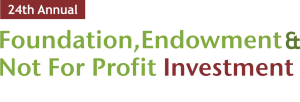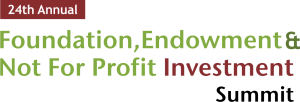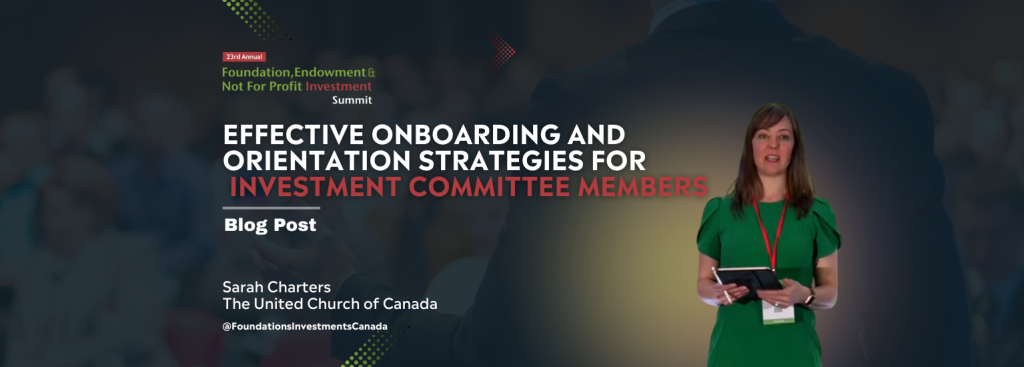Executive Summary
In the complex landscape of nonprofit financial management, the effectiveness of an investment committee can make or break an organization’s ability to fulfill its mission. Recruiting talented volunteers is challenging enough, but the real test lies in successfully integrating these individuals into a cohesive, high-performing team. This whitepaper explores the critical strategies for creating comprehensive onboarding processes that transform potential committee members into engaged, knowledgeable, and committed organizational champions.
The Changing Landscape of Nonprofit Investment Oversight
The traditional model of investment committee recruitment has become increasingly obsolete. Gone are the days when well-intentioned volunteers could rely solely on goodwill and basic financial knowledge. Today’s nonprofit investment committees require a sophisticated approach that balances financial acumen, organizational alignment, and a deep understanding of mission-driven investment strategies.
The Critical Importance of Comprehensive Onboarding
Organizational Context and Strategic Alignment
Effective onboarding is more than a simple orientation process. It represents a critical opportunity to integrate new committee members into the organization’s broader mission and strategic objectives. By providing a holistic view of the organization’s financial ecosystem, nonprofits can transform committee members from passive participants to active strategic partners. The Cost of Ineffective Onboarding Organizations that neglect comprehensive onboarding face significant risks. These include:
- Increased member turnover
- Misaligned investment strategies
- Reduced committee effectiveness
- Potential financial mismanagement
- Decreased organizational engagement
Key Components of an Effective Orientation Program
- Quarterly refresher sessions
- Continuous learning opportunities
- Regular updates on organizational developments
- Comprehensive information sharing across committees
Initial Orientation Framework
The first touchpoint of the onboarding process sets the tone for a committee member’s entire engagement. A well-designed initial orientation should go beyond basic information sharing, creating a immersive experience that connects members to the organization’s deeper purpose. Comprehensive Role Definition A detailed role description should articulate:
- Specific responsibilities
- Time commitments
- Decision-making authority
- Performance expectations
- Alignment with organizational goals
Organizational Mission Deep Dive
New committee members must understand more than just financial metrics. They need to comprehend the organization’s broader impact, connecting investment strategies to tangible outcomes like community programs, social initiatives, and long-term mission fulfillment.
Ongoing Education Strategies
Learning cannot be a one-time event. Successful investment committees require continuous education and engagement strategies that keep members informed, motivated, and connected. Continuous Learning Approach
- Quarterly deep-dive sessions
- Regular industry trend briefings
- Exposure to emerging investment methodologies
- Cross-committee knowledge sharing
Mentorship and Support Mechanisms
The Power of Peer Support
Pairing new members with experienced committee veterans creates a powerful informal learning network. This approach goes beyond traditional mentorship, creating a supportive ecosystem that accelerates member integration and collective performance. Mentorship Program Design
- Structured pairing protocols
- Regular check-in schedules
- Informal communication channels
- Knowledge transfer mechanisms
Engagement and Retention Techniques
Creating Meaningful Connection Engagement extends far beyond formal meeting participation. Successful organizations create multiple touchpoints that help committee members feel valued, informed, and connected to the broader organizational mission.
Engagement Strategies
- Comprehensive communication infrastructure
- Personalized impact reporting
- Invitation to organizational events
- Recognition and appreciation programs
Assessment and Continuous Improvement
Data-Driven Refinement
The onboarding process should be treated as a dynamic, evolving system. Regular assessment and feedback mechanisms allow organizations to continuously refine their approach, ensuring ongoing relevance and effectiveness. Assessment Methodology
- Quarterly feedback surveys
- Informal conversation evaluations
- Performance metric tracking
- Adaptive program modifications
Recommended Implementation Roadmap
- Develop comprehensive orientation documentation
- Create sophisticated mentorship protocols
- Design multi-channel communication infrastructure
- Implement flexible assessment systems
- Execute phased rollout with continuous refinement
Conclusion
In an increasingly complex nonprofit landscape, investment committee onboarding represents a critical strategic lever. By approaching member integration as a holistic, ongoing process, organizations can transform volunteer engagement from a transactional interaction to a meaningful partnership. The most successful nonprofits will be those that view their investment committees not as external oversight mechanisms, but as integral strategic partners in achieving transformative social impact.
Key Metrics for Success
- Reduced member turnover (target: <10% annually)
- Increased committee engagement scores
- Improved investment decision-making effectiveness
- Enhanced organizational alignment
Recommended Next Steps
- Conduct organizational readiness assessment
- Design customized orientation program
- Pilot implementation with select committee members
- Develop ongoing evaluation and refinement process
This whitepaper is based on the 2023 FENI Summit session featuring Sarah Charters of United Church of Canada Foundation.


